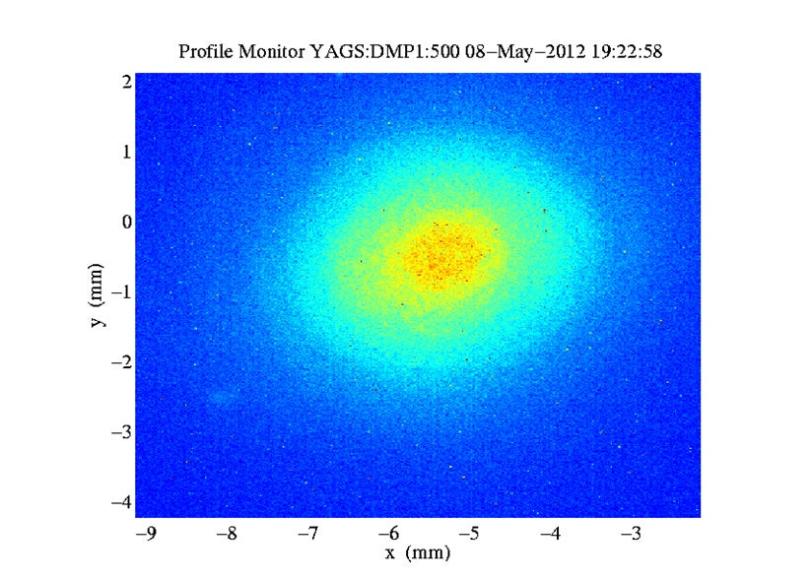Lower Energy Could Lead to More Biological Imaging at LCLS
While SLAC's Linac Coherent Light Source was designed to push the limits as a high-energy X-ray laser, users' requests have led staff at the facility to successfully step it back to a lower minimum energy for some experiments.
By Glenn Roberts Jr.
While SLAC's Linac Coherent Light Source was designed to push the limits as a high-energy X-ray laser, users' requests have led staff at the facility to successfully step it back to a lower minimum energy for some experiments.
And a successful May 8 test proved that the X-ray laser could dip more deeply into the so-called "water window," an energy regime useful for biological imaging. At these energies, any carbon in a sample stands out in high contrast to surrounding water.
In addition, operators were able to tune the beam’s energy almost down to the "carbon absorption edge" – a point at which carbon's absorption of photons sharply rises. The absorption edges of elements are useful for spectroscopic research, which can detect the presence and properties of specific elements.
Carbon is of particular interest to scientists as it plays an important role in numerous fields of research including catalysis, materials science and biology.
Rick Iverson, the LCLS area physicist who led the low-energy test, said operators were able to bring the machine's energy down to 300 electronvolts – about one-third of the minimum energy LCLS was originally designed to produce – while maintaining an intense X-ray laser beam useful for illuminating samples in experiments.
The energy achieved was just shy of the 284-electronvolt carbon edge.
"We didn't know if it would work – it was below the design energy – but the skillful Ooperators and EOICs in the main control room made it happen." Iverson said. Members of SLAC's Radiation Physics Group signed off on the plan for the low-energy test after a review process.
The LCLS accelerator research group, radiation safety group, power conversion, controls software, beam containment, accelerator safety and accelerator operations all contributed to the success of the test.
A previous test had dialed back the energy to 400 electronvolts, reaching the "nitrogen edge" useful for studying nitrogen-containing samples. LCLS now regularly operates at energies as low as 480 electronvolts.
The lower-energy tests were driven by user interest, Iverson said. "We asked if (researchers) would be interested in lower energy and the response was 'Yes.' "
The team participating in the recent test achieved the record low energies with a combination of techniques.
They manipulated some of the klystrons powering SLAC’s linear accelerator to actually decelerate the electrons in the beam. And they set the powerful LCLS undulator magnets, which transform the electron beam into X-ray radiation, to a lower energy.
The lower energy setting produced a larger beam size, said Iverson, which could actually be desirable for some experiments.
More review and approvals are needed before the minimum LCLS energy can be lowered for experiments, partly because of concern about potential damage to the equipment and possible equipment upgrades, Iverson noted.
But while LCLS users cannot yet use such low-energy beam settings, the successful test is a first step in that direction. If the review and approval process does not uncover any major roadblocks, the lower energy setting could be offered as soon as October 2012.
And those settings at LCLS would likely be most applicable to experiments at the facility's Soft X-ray Materials Science (SXR) and Atomic, Molecular and Optical Science (AMO) instruments.
There are a few X-ray free electron lasers in the world that currently operate at the carbon edge, though Iverson noted that LCLS can supply a higher volume of photons than those facilities – roughly five to 10 times more than FLASH, an X-ray free electron laser operating in Germany, for example.
More photons result in higher brightness and improved imaging of samples.
Plans for LCLS II, an expansion of LCLS, include an X-ray laser with a minimum energy below the carbon edge, at 250 electronvolts.

(Image courtesy Rick Iverson, LCLS)